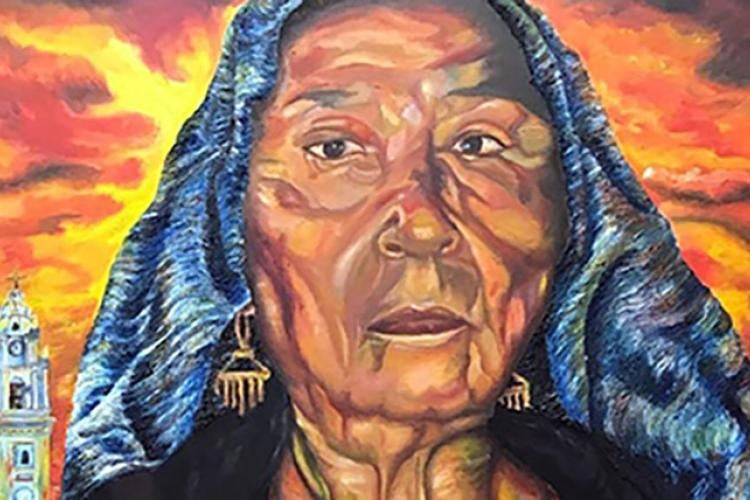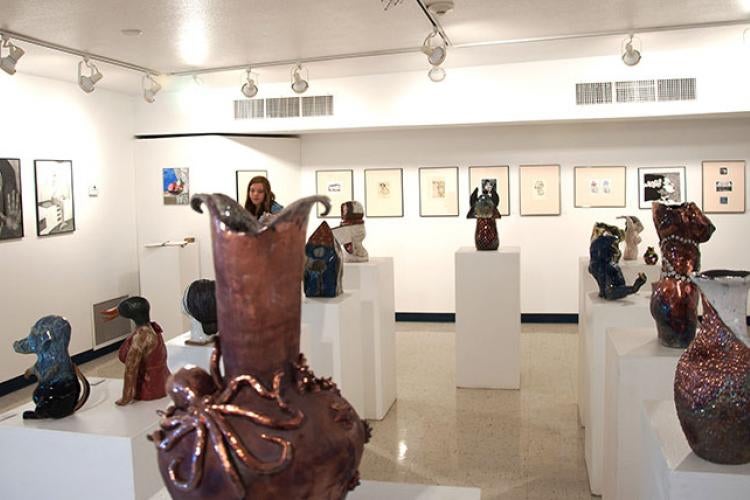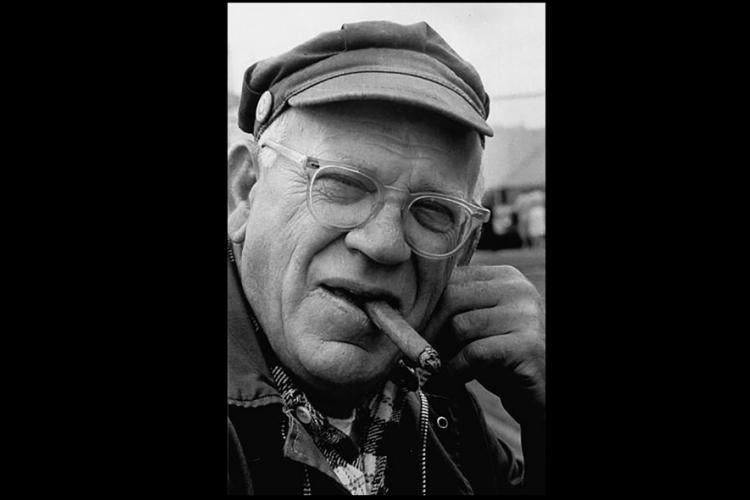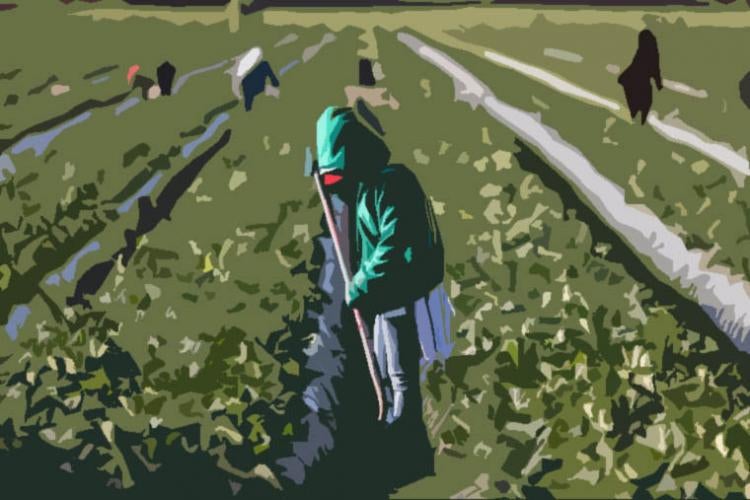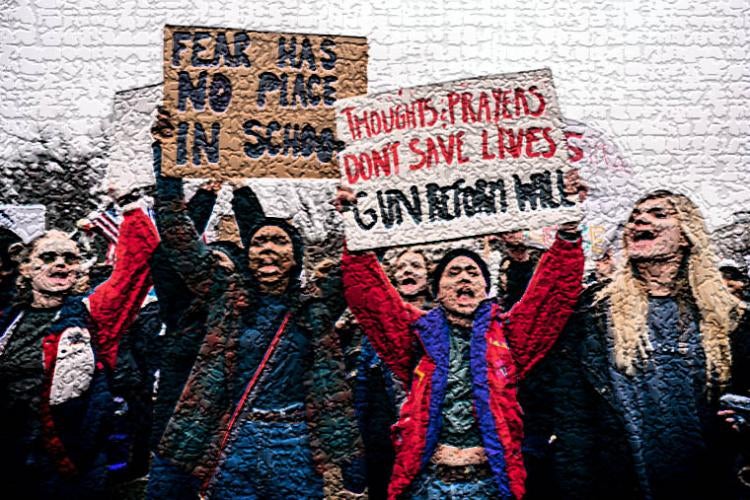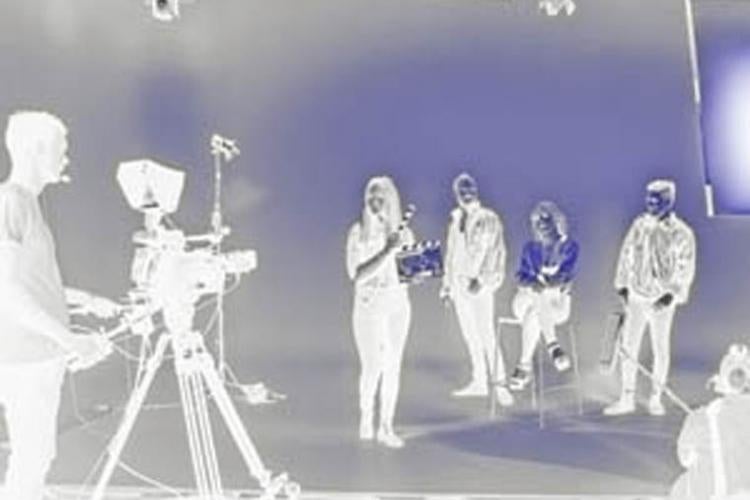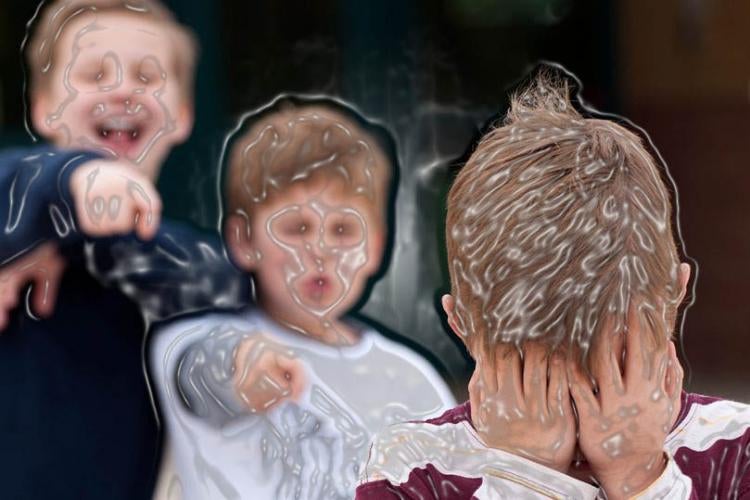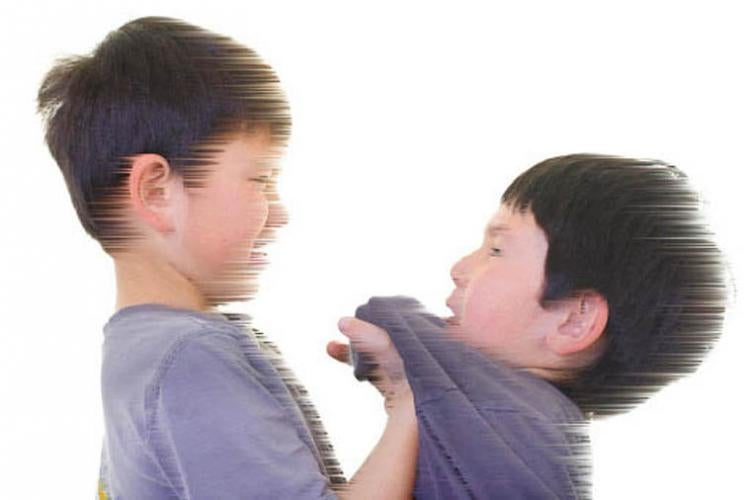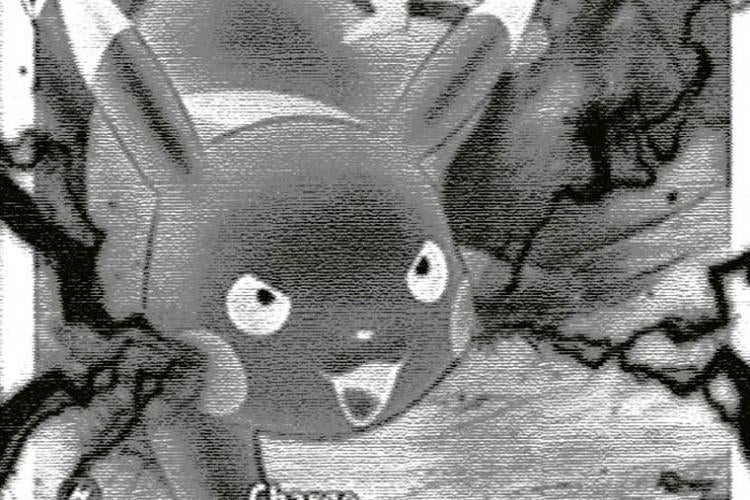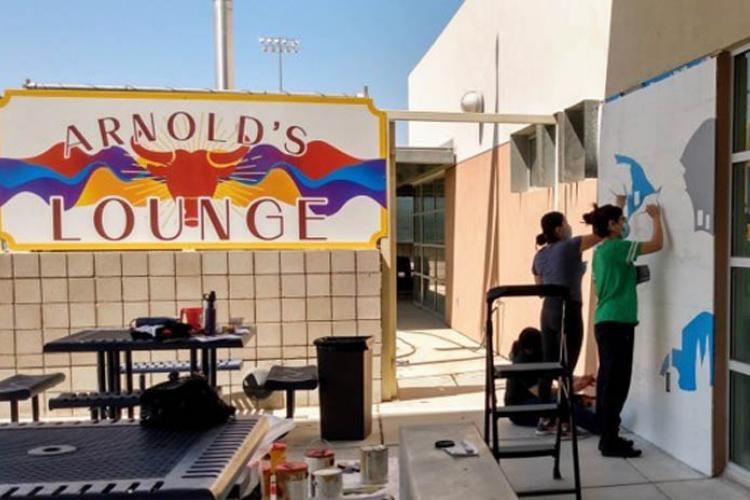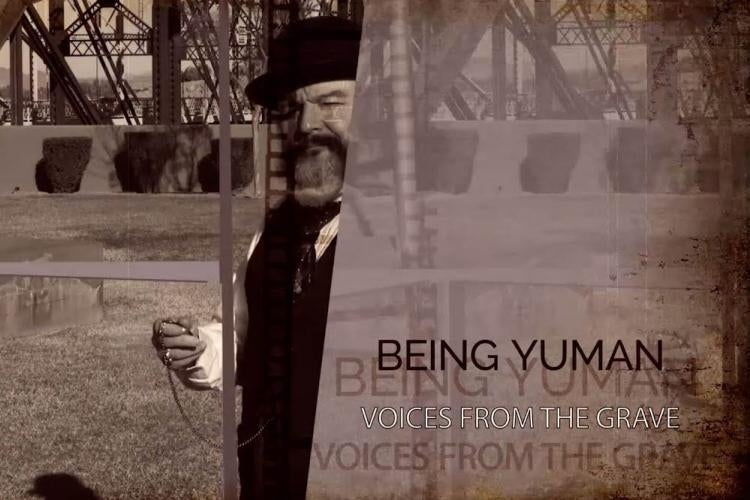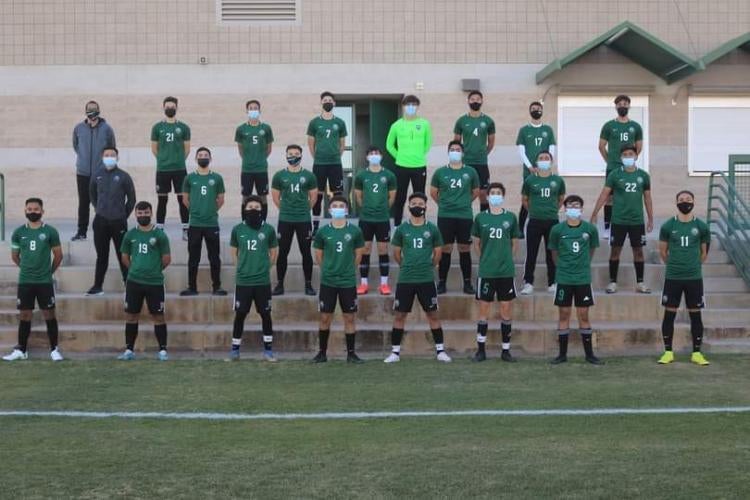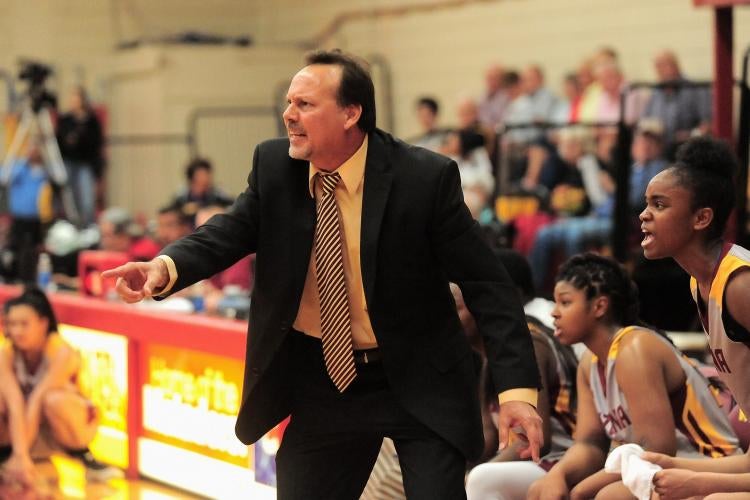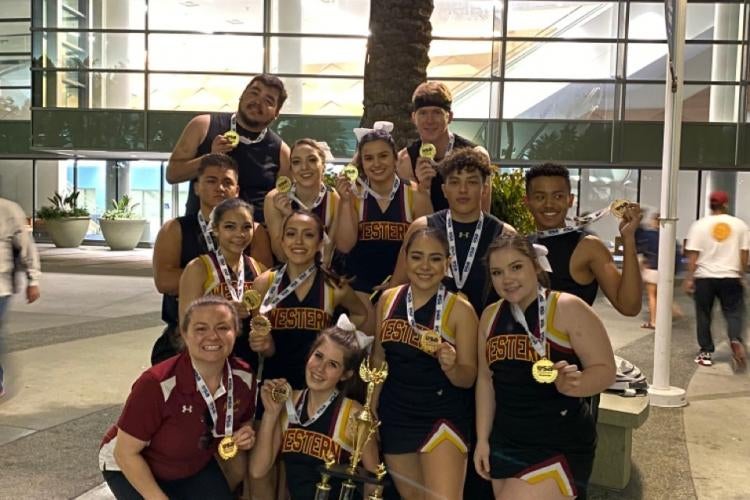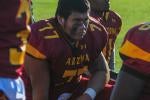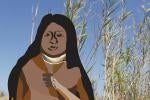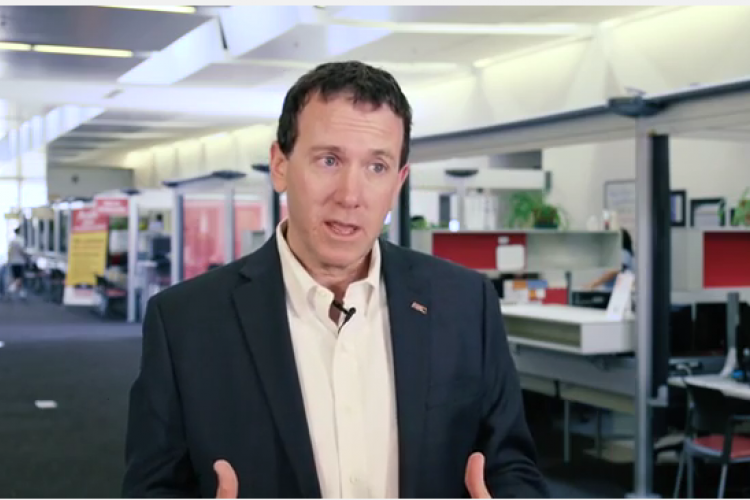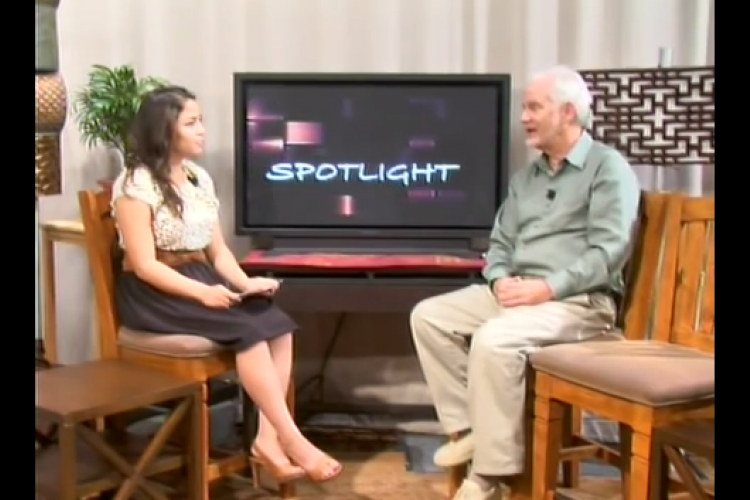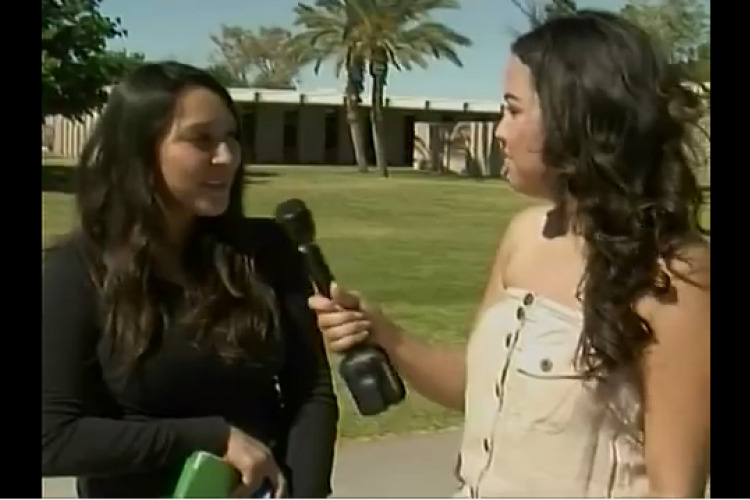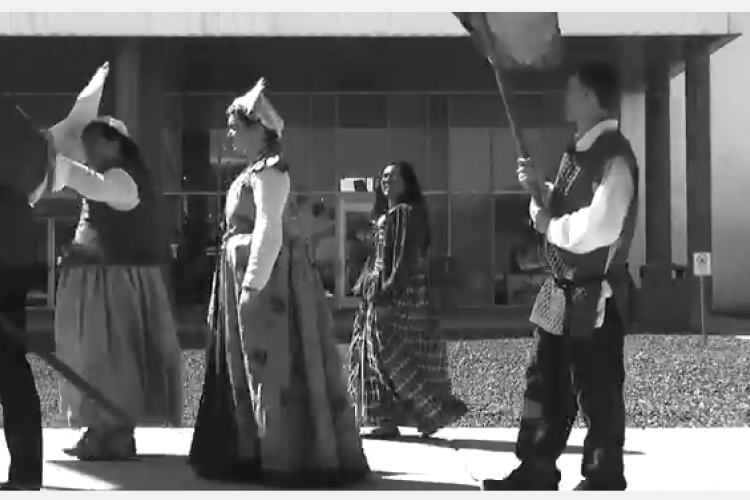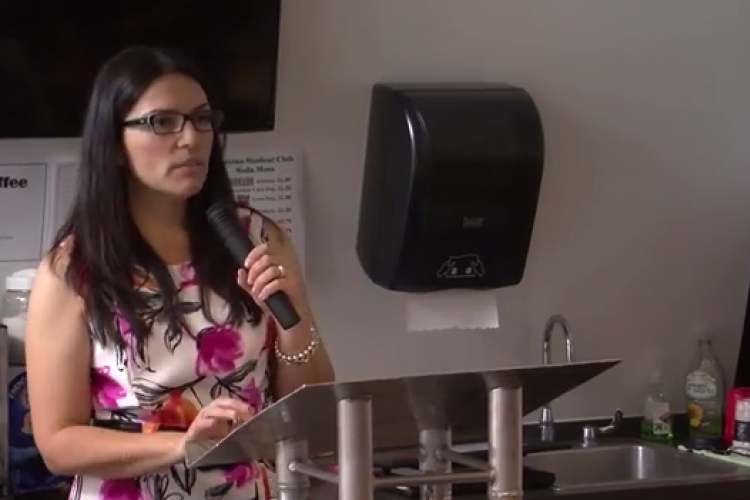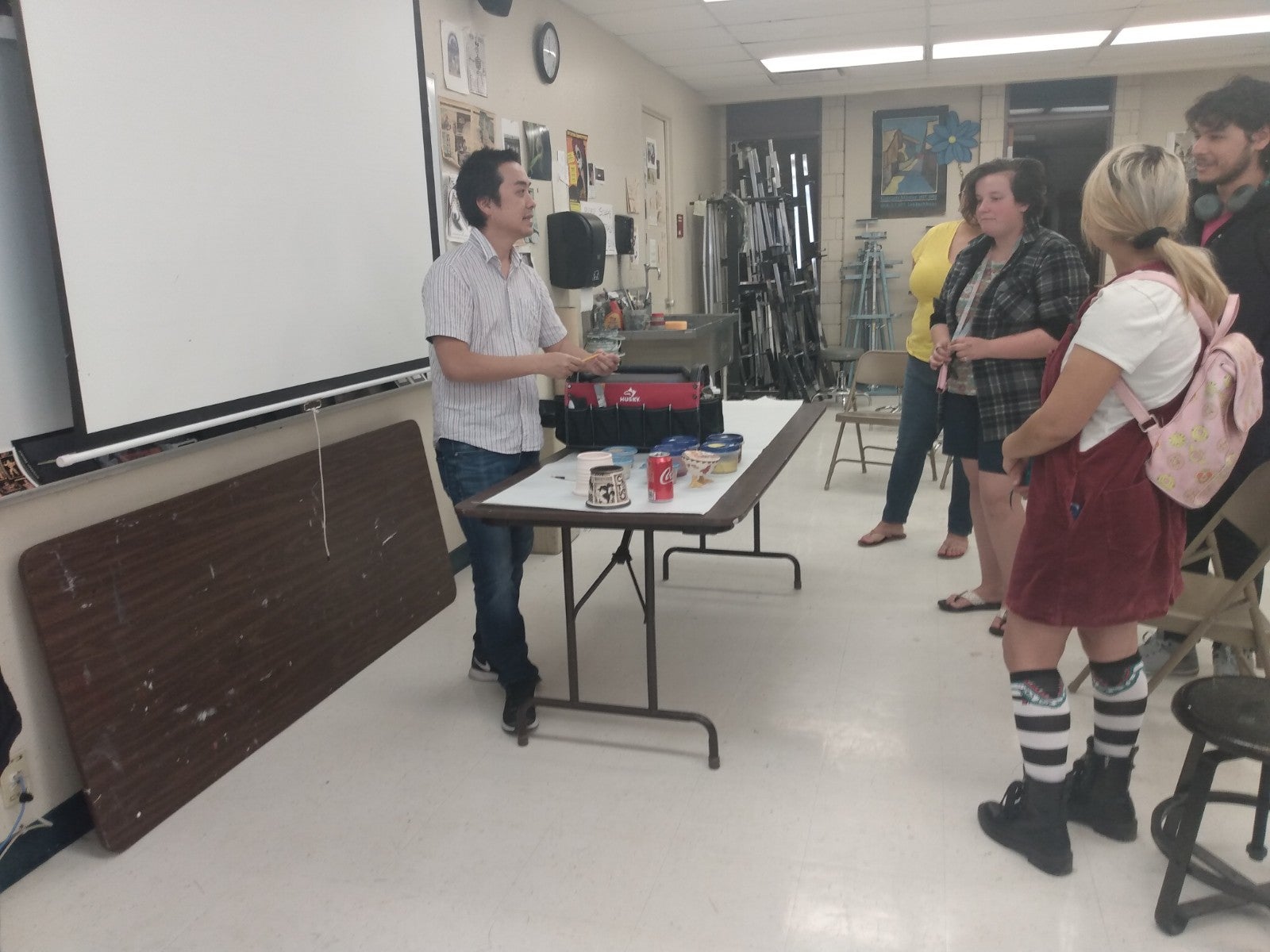
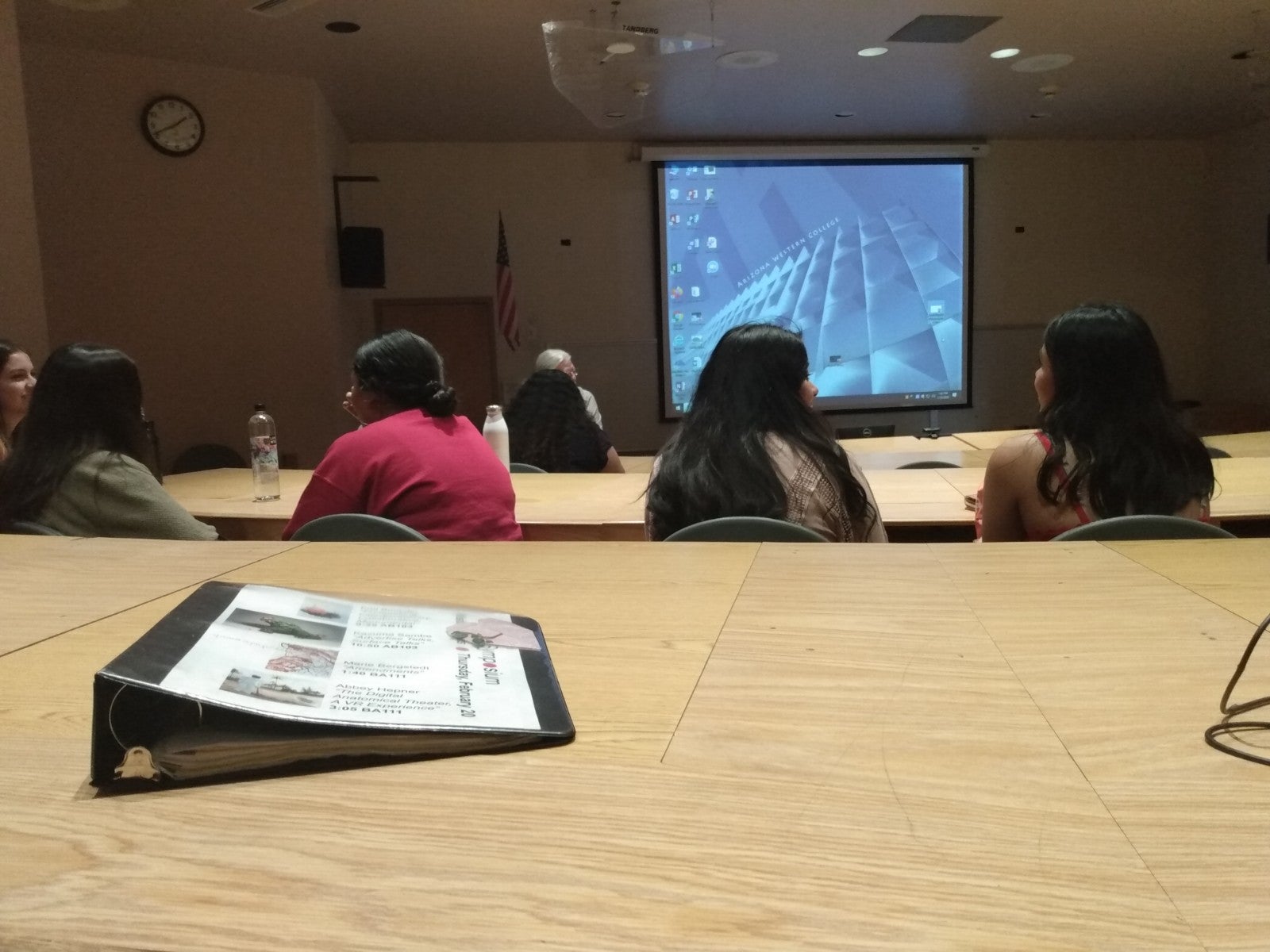
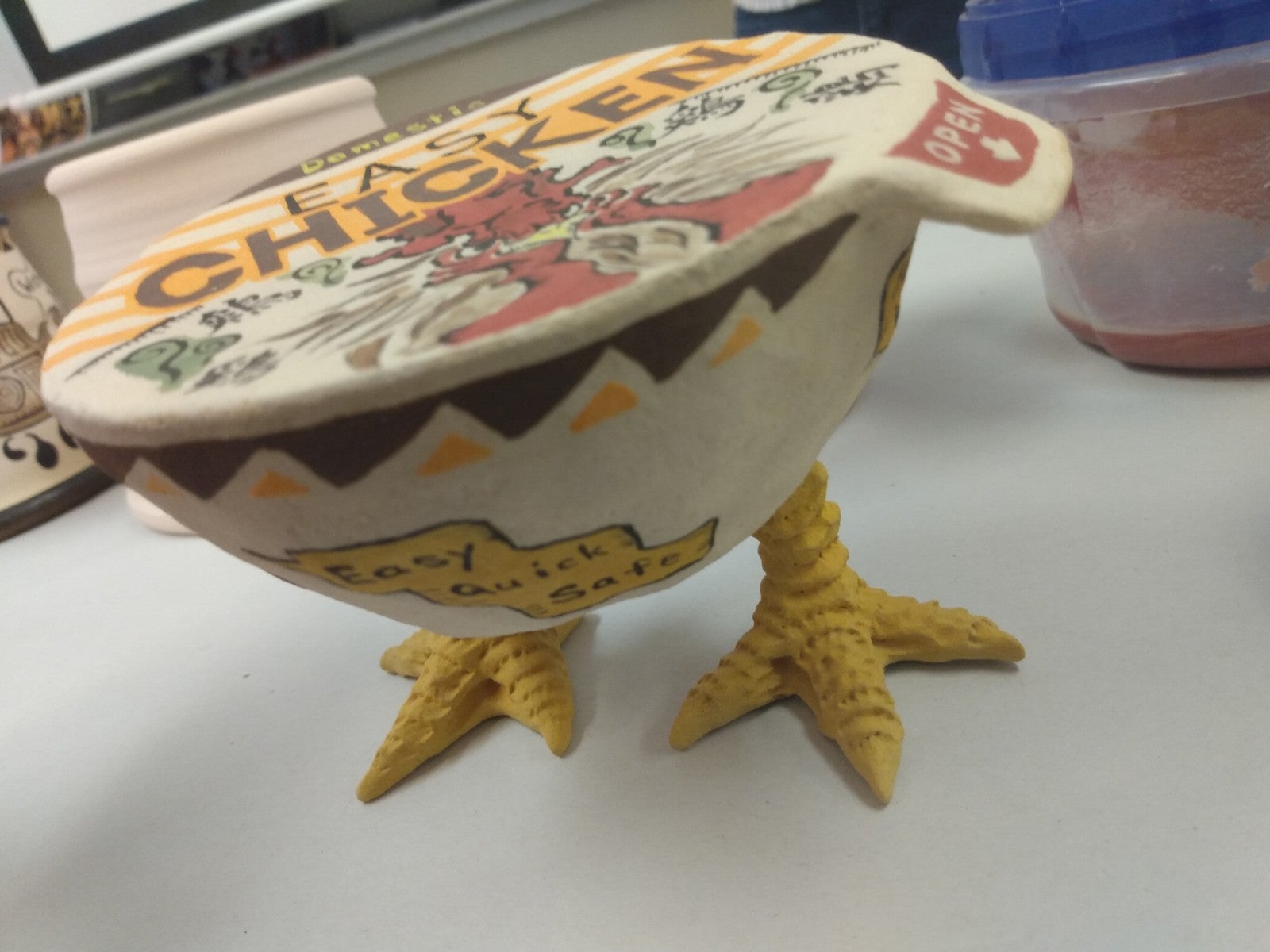
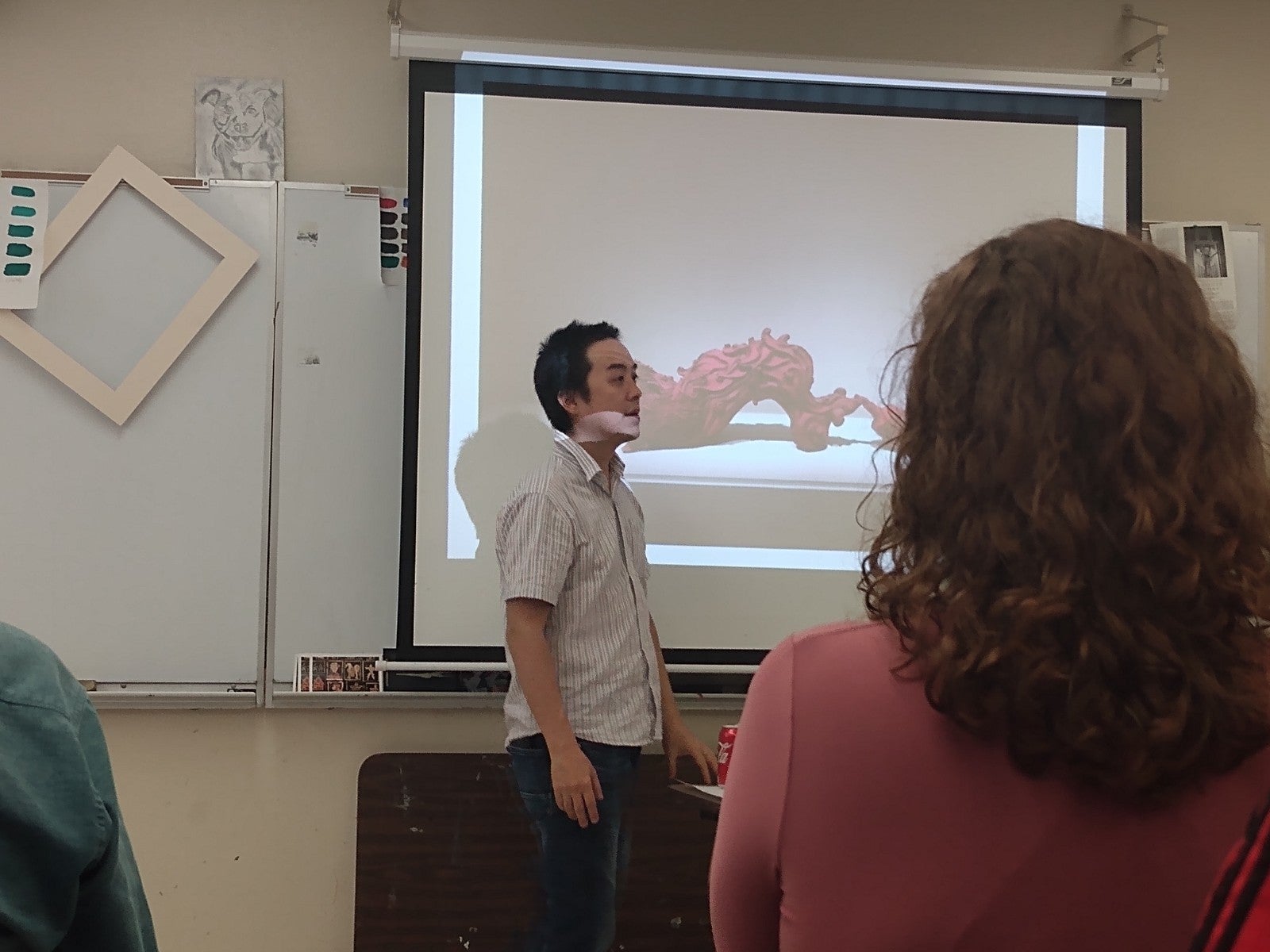
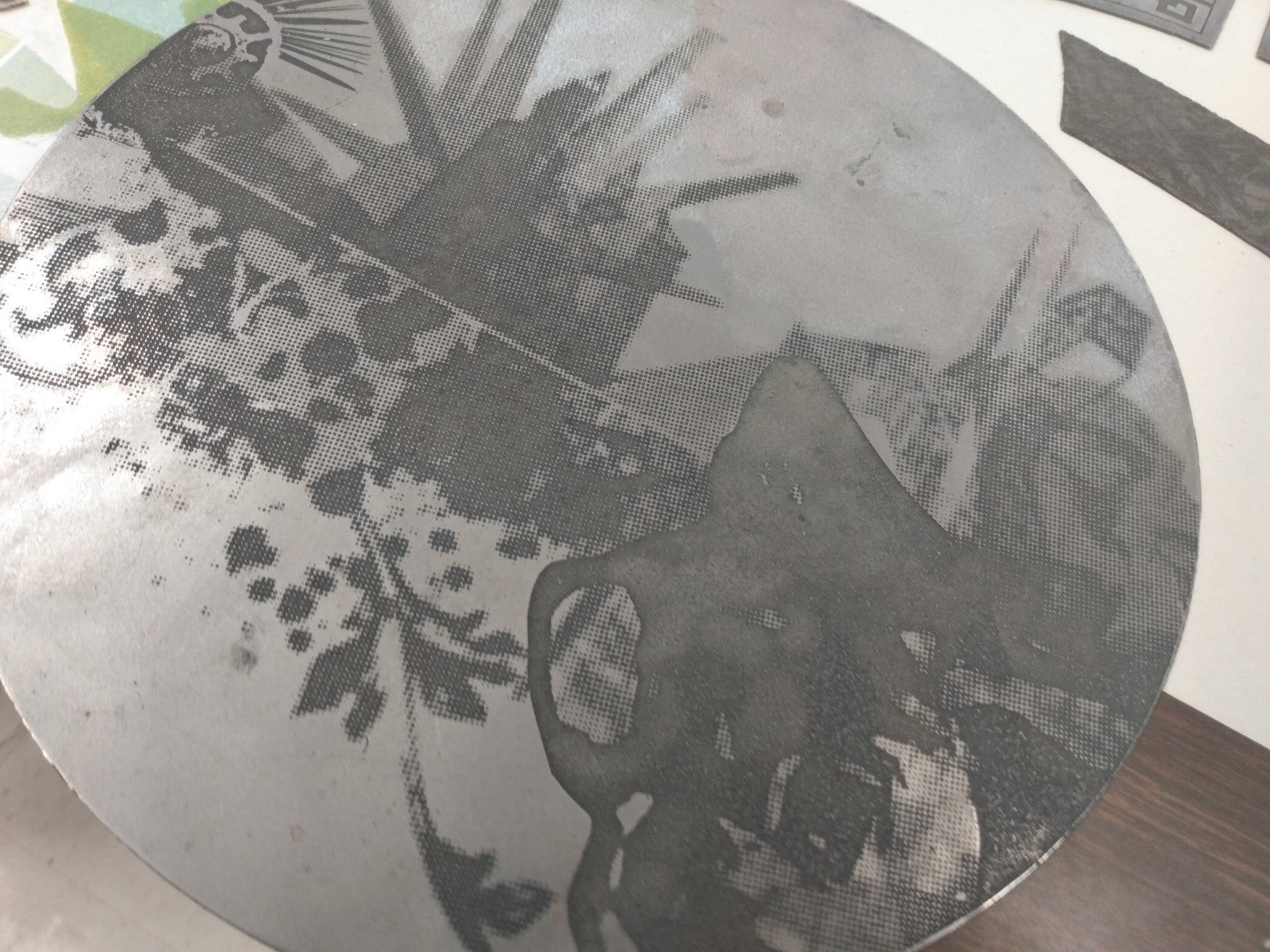
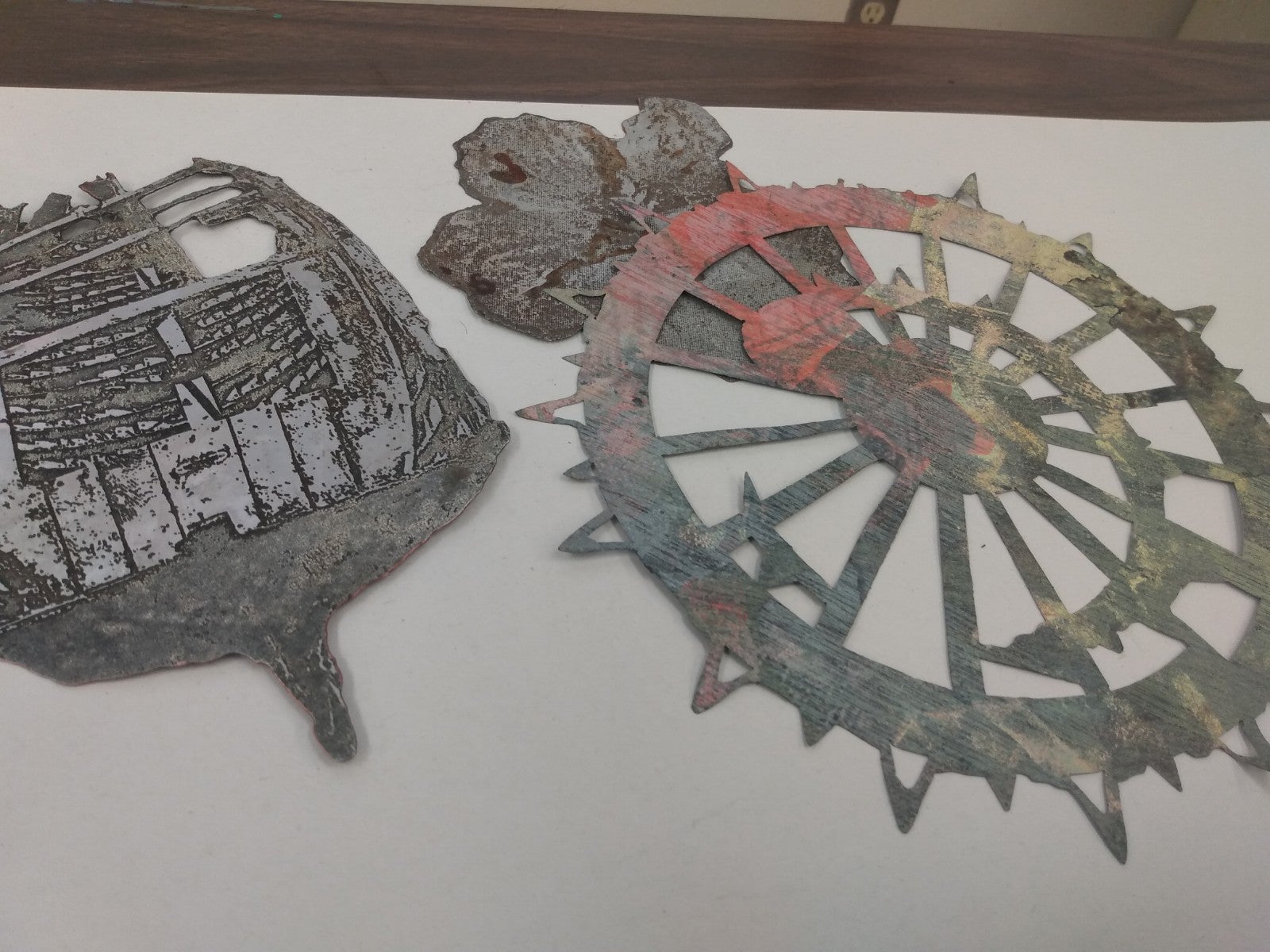
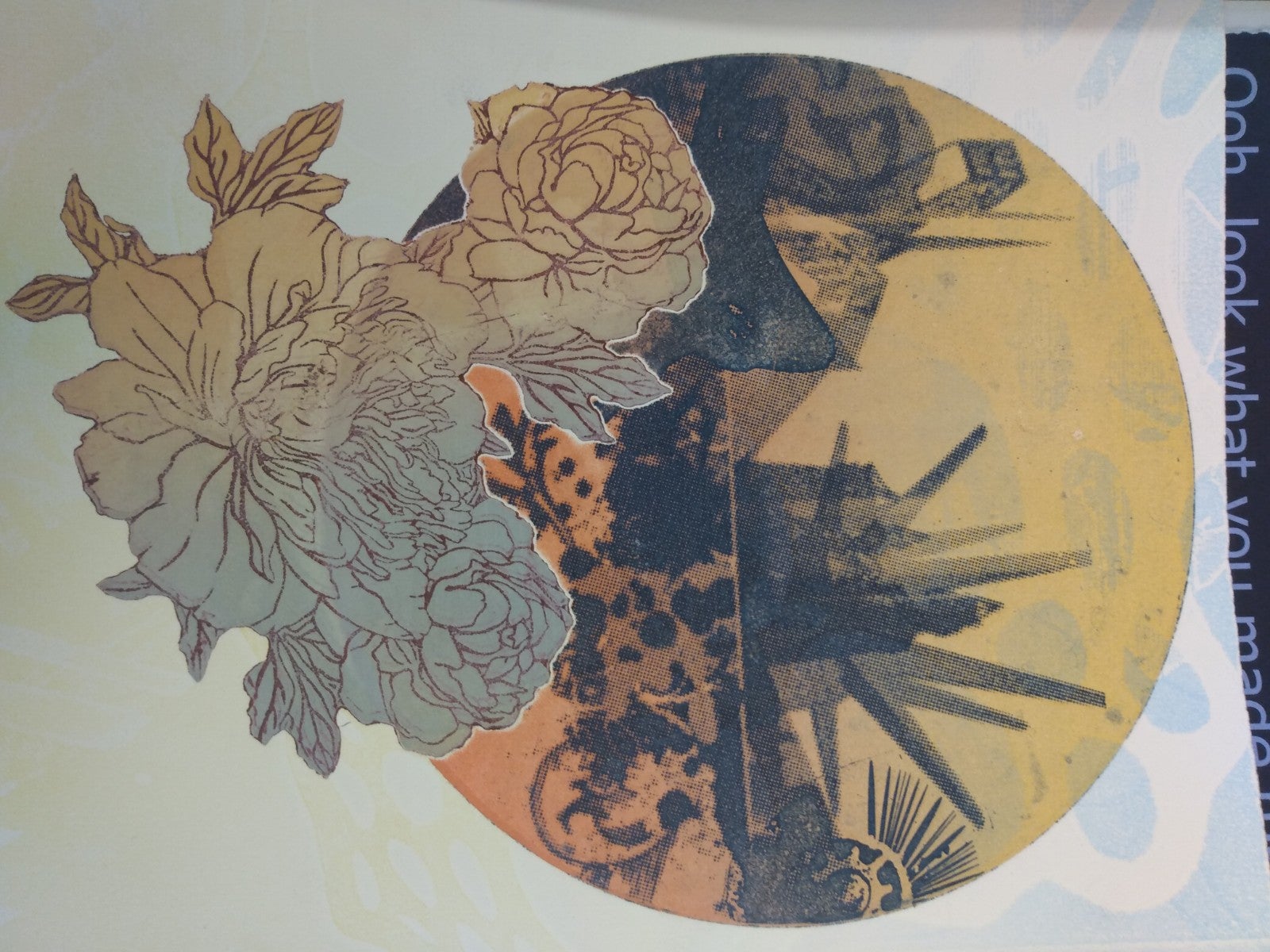
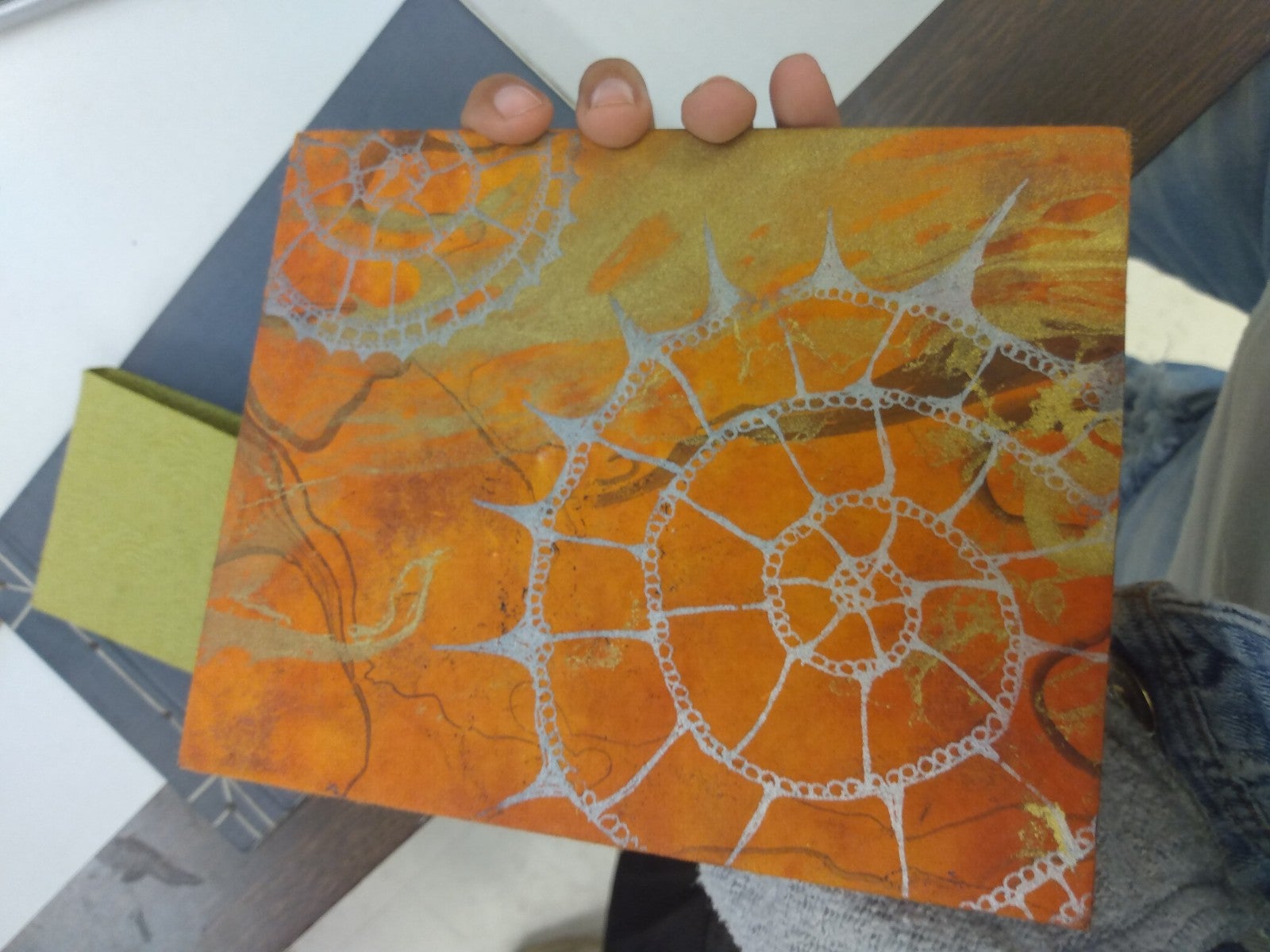
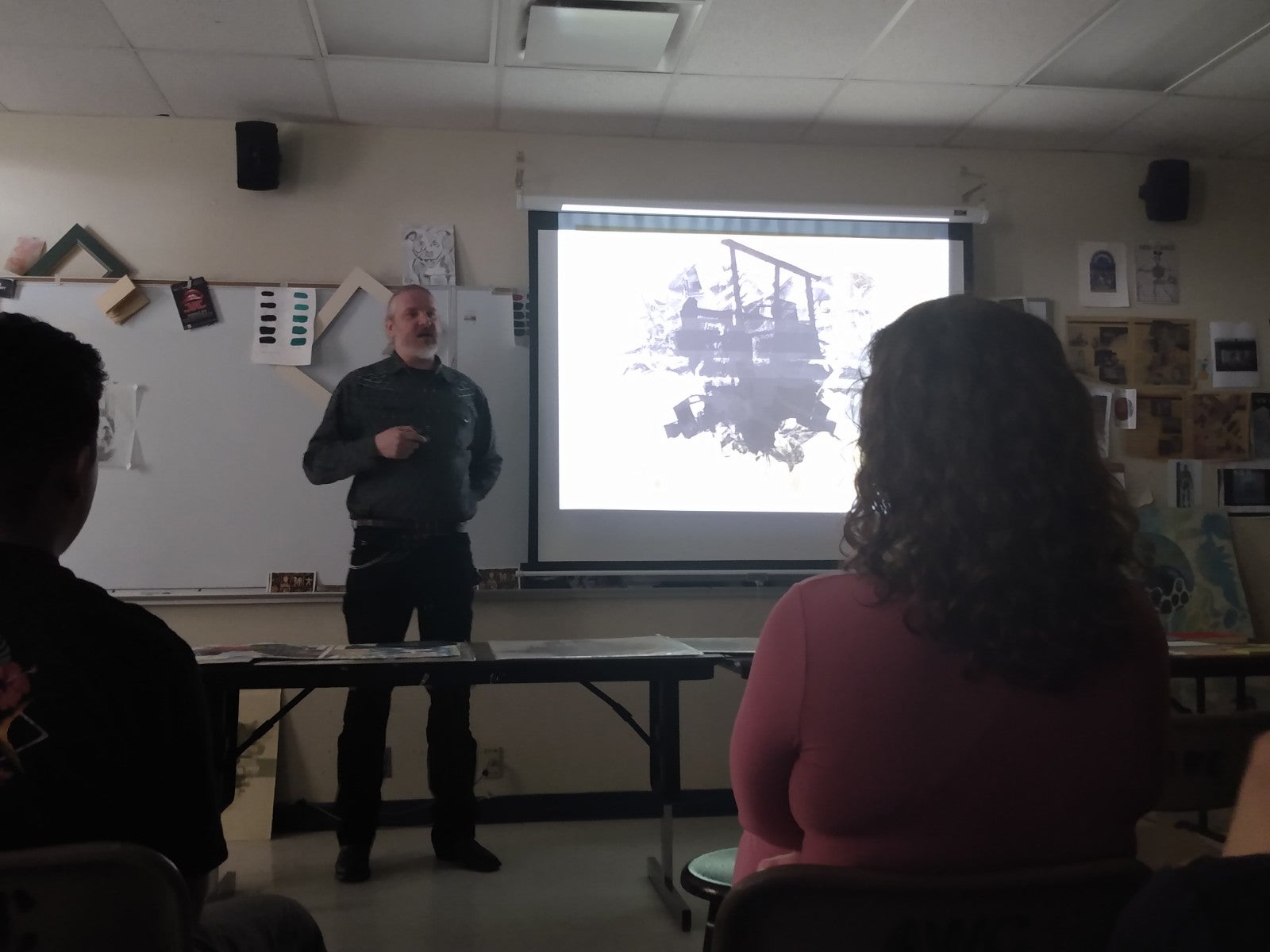
At the run-up to this year’s Yuma Art Symposium, artists from Japan, Russia and various locations in the U.S. came to visit Arizona Western College to share some of their successful works as full-time artists. The speakers invited to present at the college every year, are professors from universities and artists traveling the world who are usually enthusiastic to share their experiences.
The Pre-Symposium speeches, free in the interest of learning, may take an hour or more depending on the artist’s topic. The speakers bring examples of their work or at least show pictures include of it in their presentations.
The artists this year were Frol Boundin, Kazuma Sambe, Marie Bergestedt and Abbey Hepner. Their majors are very different, but they all had something deep to share in their work.
An international melange
Boundin, 46, has cultivated a wide variety of practices over the years, moving from digital art in Photoshop to printmaking and then to texture carvings. He expresses a strong sense of melancholy through his prints mixed with digital media that have textures, colors and photos of abandoned ruins like boats sitting on deserts.
Boundin was born in Leningrad, Russia, a place that relied on a beautiful fantasy instead of the crumbling settings of the surrounding countryside. His presentation clearly communicated his passion concerning his experiences as an artist.
“I was always looking for the nostalgia of my hometown,” said Boundin.
His prints are diverse in color, as when he used grays and whites to illustrate the empty surroundings of abandoned buildings or boats, in contrast to vibrant colors of yellows, reds and browns. All are combined with the individual carved shapes of flowers and alien-looking structures to create beautiful abstract worlds.
Sambe was born in New York, but his family moved to Japan when he was four, and he only returned to the U.S. years later. The crowd laughed along with him as he discussed his ceramic work, a synthesis of the pop culture of both the U.S. and Japan resulting in bizarre sculptures like a hotdog demon or a red dragon made of ketchup.
“I gather the inspirations from my life,” said Sambe.
Some of his works involve fat pigs that appear almost human, like a pig sitting cross-legged with 3D glasses and eating popcorn in the shape of miniature pig heads. Another strange piece is the set of several instant ramen bowls, only with chicken legs at the bottom that are either sitting down or standing as if they were alive.
Bergestedt talked about her happy childhood full of adventures, which she has captured in her art, made up of different textiles like fabric-stitching work. Her faces are illustrated with buttons in all tones of skin, from pinks to browns. She also creates empty human figures constructed from clothes, like hollow sculptures with no body.
Bergestedt was born in a small town with a big family because her mother married several times and many people came and left from her life leaving impactful experiences that have inspired her creations. She has lived long enough to see many close friends and family pass away and although her life has brought many misfortunes, she retains her sweet personality.
Hepner, a widely exhibited photographer, is fascinated by the technology of how virtual reality is created, even if she gets nauseous using it. She has degrees in studio art and psychology and a Master of Fine Arts in photography.
A deep, rich history
The Pre-Symposium is an annual AWC event intended to showcase talented artists working in various mediums. Attendees are encouraged to attend the larger Symposium, which is also free and open to the public.
The Symposium goes back to the mid ‘70s, when AWC professors George Tomkins and Pete Jagoda began to bring in guest artists to work with their students. Artists, teachers and students would meet at the college or go somewhere else to eat tasty foods, sometimes by a campfire, and they would simply discuss ideas and learn from each other.
After a few years, Tomkins took over for the Symposium and included a bigger event, adding an exhibition at the Yuma Art Center. The event continued to grow to the point that it became too expensive for the college to sponsor.
Now both Symposiums are fully supported by a community of people who show a strong interest in these workshops. The Pre-Symposium at AWC is just a sneak peak of what people can expect to see at the full Symposium downtown, but to get the full experience art lovers will want to attend both.

